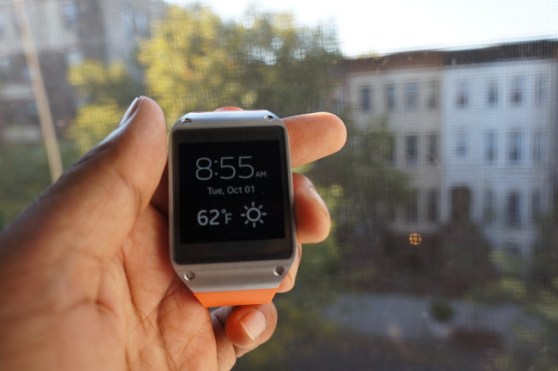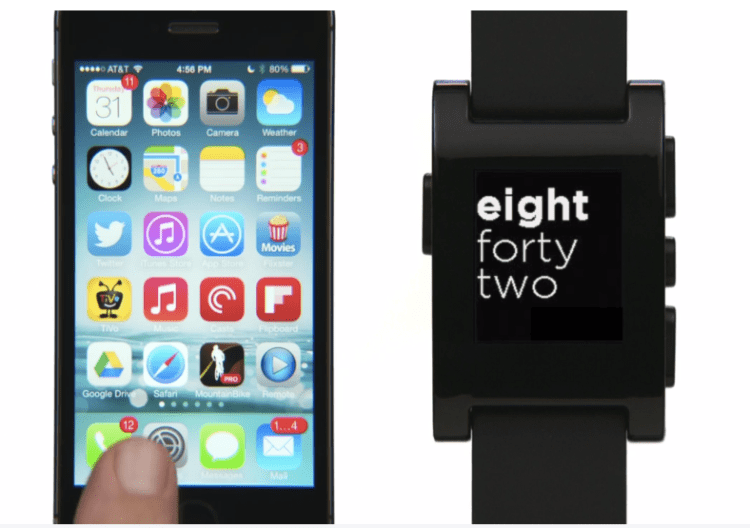Samsung is a multibillion company with 425,000 employees and a massive supply chain. Pebble is 40-strong and fueled by $10 million in Kickstarter money.
So you might be surprised at which one is making the better smartwatch.
On Wednesday, Pebble unveiled the latest steps in its effort to take over your wrist. It has a new, more powerful developer kit, and it finally supports all of the notifications coming out of iOS. Oh, and it also has companies like Foursquare, Yelp, and GoPro making native apps for the device.
While Pebble has faced more than its share of manufacturing issues, it’s since figured out the bulk of them. This has let the company shift its focus over to software, which is arguably far more important to its future success than hardware.
And Samsung, Sony, and others could learn a thing or two from what Pebble has done so far.
Courting developers
Pebble has also done a great job in recent months of tapping into the developer excitement surrounding its device. The company has an major presence on the Pebble subreddit, for example, and it actively courts suggestions from Pebble owners and developers on how to make its device better. (It also hosted a developer retreat back in August.)
Samsung, too, is aware of the importance of making its smartwatch a platform, which is why it also launched a developer kit for its device. But outside the 70 apps the device launched with (including those from the likes of Evernote, RunKeeper, and myFitnessPal) there doesn’t seem to be all that much broader developer interest so far in what Samsung has created. And it doesn’t help that the Gear app store is still invite-only for developers.
The Gear faces some larger issues as well. One of the most unfortunate things about the device is that Samsung equipped it to only work with a handful of (its own) smartphones. This greatly reduces the device’s larger appeal, making it less likely that developers are going to spend time creating apps for it. That could change, but the Samsung-locked ecosystem isn’t exactly promising right now.
Pebble, in contrast, is already on roughly 190,000 wrists, is multiplatform, and is furnished with over 80,000 apps and watch-faces.
Comfort and battery life
As we noted in our review, the Galaxy Gear is bulky, unpolished, and so uncomfortable that it begs you to take it off by the end of the day. That’s just about the worst way to make a watch. Compare that with the Pebble, which just about all reviewers say is comfortable to wear all day.
And then there’s battery life. Thanks to its flashy color display, the Galaxy Gear lasts for roughly a day on a single charge, while Pebble says its battery can last as long as a week. Which approach do you think makes more sense for a watch?

Finding real uses for smartwatches
While Samsung’s advertisements for the Galaxy Gear did a great job of capturing much of the geek excitement around smartwatches, the company hasn’t done a great job grounding that excitement in actual utility.
This, again, was an issue that we ran into often in our experiences with the device: Smartwatches — including the Gear and Pebble — still haven’t reached the point where they’re actually useful. They may be exciting, yes, but they’re still far from essential (or at least as “essential” as expensive high-tech gadgets can get). They’re also not particularly “smart.”
Pebble, however, has done a better job of answering the utility question than Samsung has so far. With its latest software updates, the device finally supports all iOS7 notifications, letting it work alongside apps like Google Maps, Uber, and Foursquare to keep owners informed while also staying out of the way.
Via its new SDK, Pebble is also making a strong play for making its smartwatch rival dedicated fitness trackers, too. It’s also showing how the Pebble can be used to remotely control other devices, as its integration with home automation software iControl shows.
As Pebble CEO Eric Migicovsky put it recently, “The reason you should put a wearable on your body is because its useful and solves a problem, and you should appreciate it in your everyday life.”
Samsung, Sony, et al. — take note.


